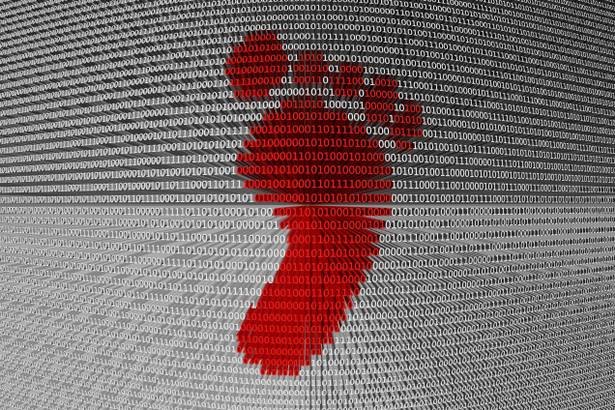All You Need to Know About Digital Footprint


- What is digital footprint?
- How we leave digital footprint
- Benefits and disadvantages of digital footprint
- How to monitor your digital footprint
- Final thoughts
Over the past decade, global average Internet usage has increased by outrageous figures. According to USC Annenberg’s Center for the Digital Future, Americans now spend an average of 23.6 hours on the internet weekly. That figure was merely 9.4 hours per week 20 years ago.
But what is so special about the fact that people now spend more time online? In this world of free WiFi and fast broadband services, isn’t that precisely what we should be doing? Surfing the Internet is cool, but we are all leaving breadcrumbs wherever we go, knowingly or unknowingly.
Your online activities leave digital footprints, which can be a tool for good or evil. Companies, for example, can benefit from targeting consumers with their services. But for users, it can expose them to unwanted advertisers.
This information can be used to track your activities across various websites and targeted adverts.
So What Exactly Is Digital Footprint?
In simple terms, your digital footprint is the trail you leave behind when you surf the internet. That includes your browsing history, social media posts, online subscriptions, sites visited, among other things.
Since we all spend so much time online these days, it is virtually impossible not to leave a trail behind. However, you can cover or at least minimize your track by taking preventive measures.
Top Ways We Leave Digital Footprints
We leave a digital footprint in various ways through our online activities. However, some of the biggest culprits include:
Websites and e-shopping Platforms
Most websites and online shopping platforms use cookies. These programs record your activities on the site and track your Internet traffic across various websites, as well. The information these tools collect helps online advertisers determine what you like.
So the next time Amazon suggests some products you have recently looked up on Google out of nowhere, just know it’s your digital footprint at work.
Social Media
Users spend most of their online time browsing social media platforms. That means these websites constitute a significant part of your digital footprint. That includes all your tweets and retweets, Facebook comments (including private ones), likes, videos, and so on.
Your digital footprint on social media platforms also includes information about yourself. In other words, data that you have willingly put out there. Hence, you must censor or monitor what you post on these platforms.
Mobile Phones and PCs
Some websites don’t just log your activities. They also identify which device you’re using to access them. While this is mostly used as a security measure to monitor your account on these platforms, it is also a way to harvest information about your habits.
Benefits of Digital Footprint
While digital footprints may sound like the bane of online activities already, they are not always a bad thing. There are several ways they have been helping you to get better services.
Predictive Suggestions
Perhaps the biggest benefit of digital footprint is that they help online services determine what you prefer. YouTube, Netflix, Spotify, and other streaming services analyze your digital footprint to give you customized suggestions.
Google also tailors your search results to deliver answers that are more likely to suit your needs.
E-Commerce
Online shopping websites like Amazon also suggest products for you to buy based on your browsing habits. That makes it easy for you to find your preferred products instead of spending hours searching for what you want.
However, some experts argued that this could promote impulsive spending, and it can be viewed as a form of invasive advertisement.
Disadvantages of Digital Footprint
Digital footprint has its advantages, but they are most known for being infamous. Here’s why:
Invasive Advertisement
As I already mentioned, search engines, e-commerce websites, and social media websites can target you with ads. That puts you in a sticky position. For example, you may end up spending more than you intend when you shop online.
Negative Image
Your digital footprint paints a picture of who you are online. For many people, their Internet identity is even more tangible than their real-life persona. Thus, if you have harmful content about you on the web, especially concerning things you willingly posted, it can haunt you in the future.
And the more negative data that’s available, the more you can be profiled and targeted. That is why you must monitor your digital footprint.
How to Monitor Your Digital Footprint
As mentioned, it is impossible to leave zero digital footprints. The best you can do is keep them to a minimum and maintain a positive image. Here are some tips that can help with this.
Google Yourself
Yes, it might sound ridiculous, but putting your name in a search engine will help you get an idea of what your virtual identity and digital footprint look like. It is particularly useful for scrutinizing content that you posted in the past.
Be a Good Digital Citizen
Most people are only concerned about privacy and anonymity online. But you shouldn’t just worry about who steals your data; you should also be careful about what you post online. Employers now use digital footprint as a way to carry out background checks on prospective employees.
Just recently, a Harvard student lost his place in the prestigious institution because of a racist comment he posted online many years ago. That is only one of the many cases. Remember, the internet never forgets. So be thoughtful about your posts, comments, and every other thing you do online.
Read Privacy Policies
Here is something almost everyone is guilty of. Think of how many “I Agree” button you have clicked without reading the terms and conditions. They might very well be asking you to give up your arms and legs, and you’ll be freely agreeing to it without question.
Even if you can’t read the entire document, you should skim through it quickly to identify possible privacy loopholes.
“Why would anyone read the terms of service when they don’t feel as though they have a choice in the first place? It’s not as though a user can call up Mark Zuckerberg and negotiate his or her own privacy policy. The “I agree” button should have long ago been renamed “Meh, whatever.”
New York Times Editorial
Use Privacy Settings
Getting familiar with the privacy settings of your apps and websites is crucial. It can help you determine how much of your info is open to the public. Additionally, you can identify the data that online platforms like Facebook and others collect about you.
Protect Yourself With Cybersecurity Tools
Fortunately, some tools can help you keep a leash on your digital footprint and manage information leakage. For example, some browsers now have extensions and add-ons to limit how much personal data websites can collect.
There are also tools for opting out from subscriptions and services you might have subscribed to in the past.
Moreover, you can use a VPN (Virtual Private Network) to maintain some level of anonymity online. It is a service that allows you to safely browse the web by rerouting your connection through a remote server. A reputable VPN service shields your online activity and protects your personal information.
Furthermore, the VPN software encrypts data from your device and sends it directly to a server of your choice. As a result, your Internet traffic will remain secure and anonymous.
Digital Footprint – Parting Words
Today, you can easily browse through several web pages within mere minutes. However, that exposes you to countless dangers. One of those is leaving behind digital footprints, which makes you an easy target for ads and tracking.
Hence, there is a need to control and monitor how much you reveal about yourself, both intentionally and inadvertently.
Do you take precautionary measures like VPNs to minimize your digital footprint? Tell us all about it below.



